All about low-current networks providing high-quality communication in residential buildings, the work of television, radio, home automation, computers, etc.
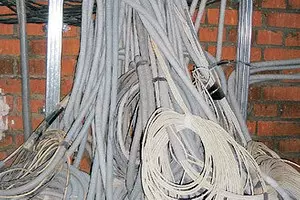
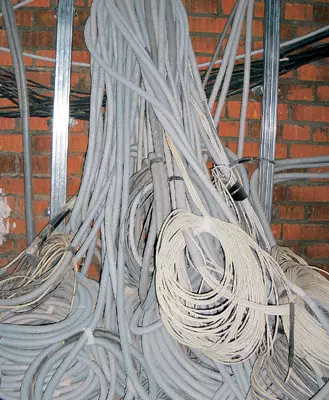
The length of low-current networks of various purposes in modern homes is calculated by kilometers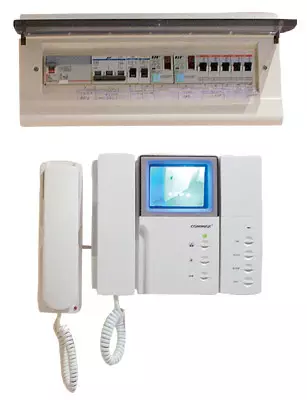
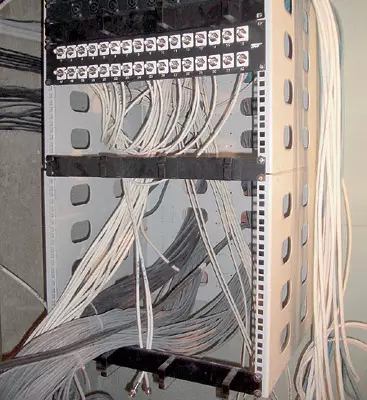
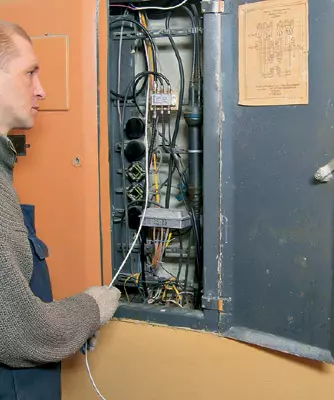
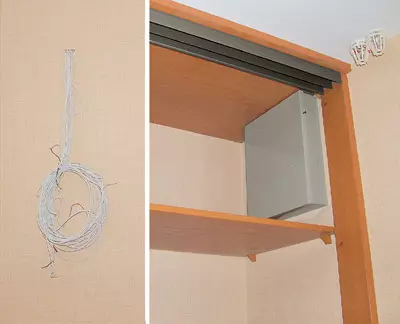
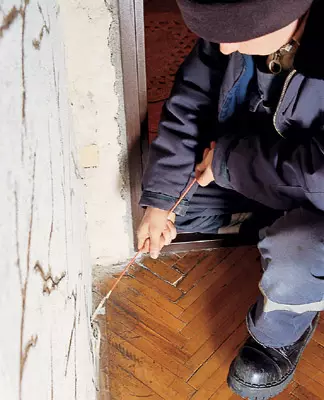
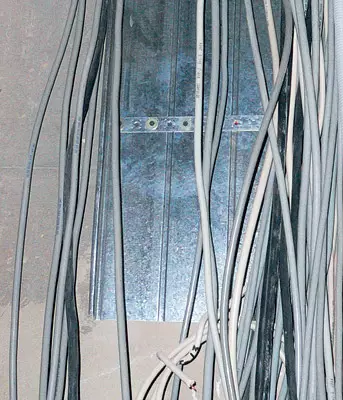
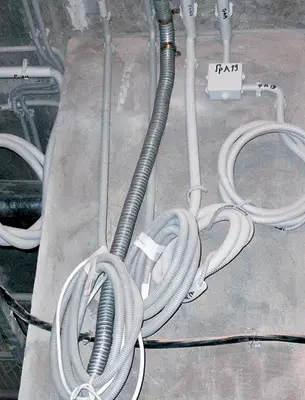
To avoid interference and mechanical damage, some low-current cables are concluded in metal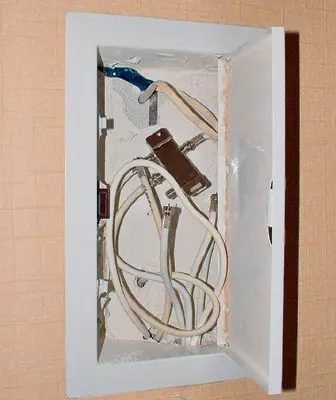
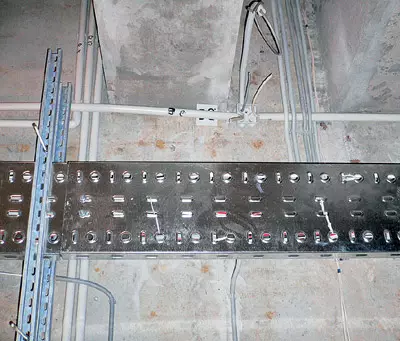
Low-current cables can be laid in PVC pipes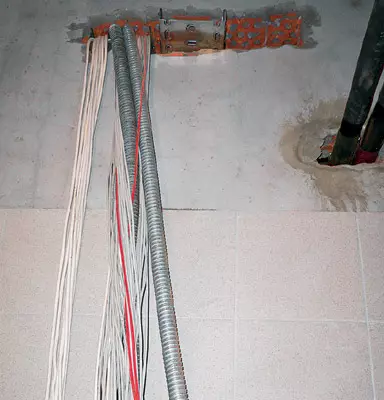
Made by open method The low-speed wiring is hidden behind the tailing plasterboard walls and ceilings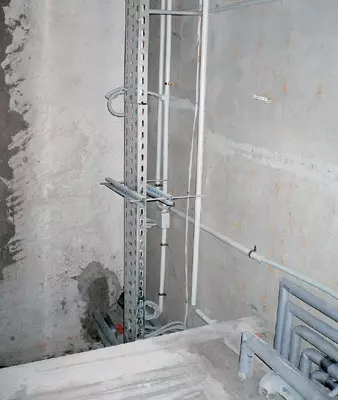
Metal trays are used for convenience of laying a large number of wires in the technical premises.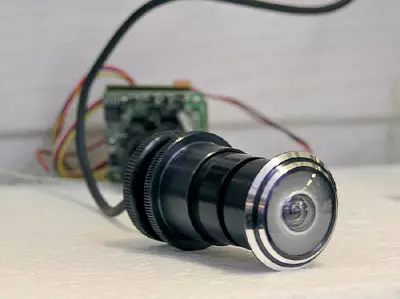
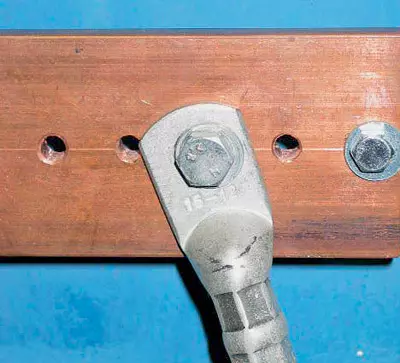
Grounding tires low-voltage networks are made as thoroughly as the electrical wiring tires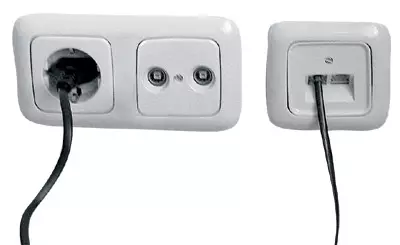
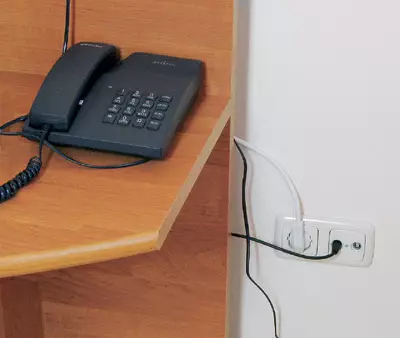
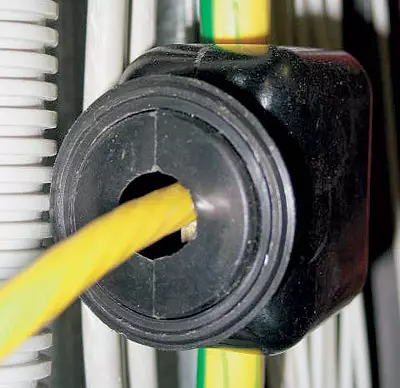
The low-current network is an integral part of the engineering equipment of modern housing. Without them, high-quality communication is impossible, television, radio, home automatics do not work, do not function from each other computers. What are the low-current networks and what are their possibilities in apartment buildings?
Wire services
Few of us thinks about what the purpose of the wires and cables is unknown by whom and when deployed from one roof to another, tightened to underground collectors.
It will be about low-voltage networks that provide cable television, wired radio, telephony and Internet, fire and security systems, automated energy resources, local computer networks, interconnecting devices in residential buildings. Since monopolies on commercial activities related to the provision of the consumer services on the Wires today do not exist, various organizations create their own low-voltage networks, stretching wires and cables both by air and underground. Laying underground communications costs much more expensive and in the conditions of the city is not always possible. Therefore, the wires of low-current networks are often hanging on the power lines support and throw from home to the house. This is done and when laying trunk fiber optic communication cables, for which the signals are transmitted as light pulses. If it is impossible to stretch the wires to an object by air or underground method, the signals are transmitted using radio channels.
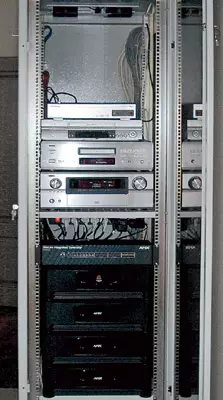
Finding into the building through the attic or the ground floor, low-current wires and cables are becoming specially highlighted for these purposes, which is two or more steel inch pipes, and stretch to distribution points. These items have the form of mounting panels or crossings, which, in turn, are placed in floor or wall cabinets and racks. Consumer houses built on the projects of the 20th century, in intermediate input and distribution devices (electrical panels) for distribution points of low-voltage networks, as a rule, a special section is highlighted. Daily buildings equipped with energy-saving automatics, separate shields are equipped for these purposes. Despite the fact that the voltage in low-current networks is 12-24V, and the currents flowing in them are measured in milliamperes, wires, cables and low-current equipment are part of the electrical installation of the house and the apartment. They are included in the overall system of equalizing potentials and grounded by the rules of the electrical installation device.
Now the relevance of low-current networks increased dramatically, since the mayor's office of large cities adopted a number of promising programs for creating automated energy accounting systems and urban networks Intranet. The transmission of signals in them is carried out mainly on wires. Thus, in the near Moscow region, the efforts of a specialized municipal organization and its dealer, an intranet urban network is practically completed. Its subscribers enjoy free Internet access to local information resources, recorded on the reception to doctors, pay the accounts of IT.P. More and more citizens set the system of security and video surveillance in their apartments, receiving information about the state of affairs in dwellings in the absence of hosts.
What organizations have the right to mount in homes of low-current networks, what are their rights and obligations, what are the responsibility they carry in front of the customer and the administration, where the house is located? Traditionally, city nodes of communication have the rights to carry out this kind of work (their telephony and wired broadcasting are in their jurisdiction) and municipal enterprises that ensure the effect of television antennas and cable television networks. These organizations have licenses of the Ministry of Communications for work in the field of low-current communications. The implementation of the work is preceded by the conclusion of a contract with a private person, if it comes to telephone or a radio button in an apartment, or with a legal entity (HWU, DEZ or other operational organization), if it is installation of a general-friendly cable network. The rights and obligations of the parties are indicated, penalties stipulated. The refraser of the reform of housing and communal services of the right to this kind of activity received a variety of commercial enterprises. They also have federal licenses for the installation of low-current communications. These organizations are engaged in the home of the allocated internet and cable lines (including fiber optic) television, installation in apartments and accessories of video surveillance systems and intercoms, the implementation of special types of communication. Their relationship with the customer is legally also issued by the contract.
Support structuring
Nearby day, when fragmented low-voltage networks of apartment buildings will begin to combine into structured cable systems (SCS), as is done in modern offices. What is SCS? This is a universal telecommunication infrastructure of a building / complex building, designed to transmit signals of all types, including speech, information and video. SCS can also function not throughout the building, but only on a separate floor or even in the apartment.The SCS is constructed in such a way that through each interface (connection to the system) could be logged into any of the combined networks. For example, get from the network video film, television program or talk on the phone. In this case, there are enough two lines in the workplace. Cockpage, as a rule, connect the computer and TV to the second-phone. Cables are pacing from jobs to distribution points (panels in which switching devices are located). Distribution points are combined with trunk lines, and they are already connected to the main network cable to the incoming house.
Sorrows with separate information and telephone networks SCS has several advantages. First, the system is universal: you can connect the phone and a TV, and a computer to one cable. Secondly, it is an open system. It makes it possible to use any standard network equipment of various manufacturers and allows simultaneous use of several different type network protocols (rules and orders of information signals). This is important because the protocols of automatic devices of various production are not always compatible. Whatever electronic device you are bought, it will work on the network. Thirdly, the SCS has a wider range of data transmission rates: from 100 kbps for speech applications up to 10,000 Mbps for information applications. In practice, this means saving money that we pay for the phone and for the Internet at a time rate.
With all the advantages of SCS has a significant drawback: it is still the road. So, for normal operation, the network must be laid in it for subsequent development. These are the additional cells in crossheads for connecting wires and cables, and signal amplifiers used by building cable lines, and cables with higher characteristics to ensure more devices, and much more. So far, this pleasure is 3-4 times more expensive than the installation of individual low-current networks.
Regulatory Vacuum
Already today, the growing automation and the internetization of the housing stock requires from the designers of adoption of high-tech solutions. Meanwhile, it is extremely necessary for this to this, GOST, that and other regulatory documents in domestic construction are practically absent.
The designers and installers of low-current networks were forced to enjoy in 1998. legal force "by industry construction and technological standards for the installation of constructions of communication, radio broadcasting and television of the OST-600-93 Ministry of Communications of Russia." Cerage, in them for objective reasons are not taken into account changes in the installation of low-current equipment and gaskets of communications that occurred in the last 10 years. Since most of the technologies and equipment came to us from abroad, specialists in low-current networks appeal to foreign standards, standards and departmental documents, which are developed in accordance with the jurisdiction of European countries and the United States, but they have no legal force in our country. These are international norms ISO / IES11801, European EN50173, American ANSI / TIA / EIA-568-A. Practical guidelines are used by training courses and instructions of the largest manufacturers of low-current equipment, such as the "comprehensive certification course of the EIB", according to which Russian installers and installers are trained.
Thus, cable connections in Internet networks are required for compliance with international standards ISO / IEC101, class, or E. According to this classification, the Internet network cables are the fifth and sixth categories. These requirements correspond, for example, UTP, FTP, STP cables with the conductor diameter of 0.4-0.65mm and the number of steam 2 or 4 productions of Nexans (France), PC NET, Wonderful Wirecable Co Ltd, etl Communications (All Taiwan) , "Speccabel" (Russia) IDR. These are electrical cables based on a twisted pair with a wave resistance of 100, 120 and 150 ohms in shielded and unshielded design, as well as single-mode and multimode fiber-optic cables 62.5 / 125 and 50/125. The low-current electrical wires and cables are mainly used to transmit data with a clock frequency to 1 MHz, while optical cables provide data transfer of high-speed applications. Since the last roads, they are used for laying backbone networks. Installation of internal networks is usually made by electrical wires and cables.
Col down to connect where to insert?
Although the regulatory documents on low-current networks in our country are not enough, "the tree of life is magnificent green." Specialists are guided by any documentation. Both in the domestic and foreign practice of laying telephone cables and subscriber wiring devices, installers of low-current networks follow the rules that are not much different in foreign and domestic guidelines. According to the OSF-600-93, the distance between the telephone cable and passing parallel insulated wires of lighting or power wiring should be at least 25mm. Such a requirement is fairly related to networks on which analog signals (traditional telephone, radio, television) are transmitted. Since digitized signals are used in Internet telephony, network interferences are not available for their transmission of significant influence. Consequently, the distance between the lines of the Internet and the electrical wiring can be less.
It is forbidden to start the low-current wires and cables in the electrical wiring cables, because when in the power or lighting wiring of unbalanced electric currents, it is possible to enter the low-current networks. ATEA is already fraught with a damage of expensive equipment. When crossing cables of greater tanks should be seamless to the wall, but to smallest them from above or below (in the stroke). You can determine the capacitance of cables by looking into the mounting scheme where their brand is indicated. Cables laid outside the building under drainage pipes, fire stairs and windows, should be protected from mechanical damage with metal lining. Distribution boxes need to be located on a wall at a distance of at least 300mm from the ceiling. Installing junction boxes above doors, openings and windows is not allowed.
Embedded by an open or hidden way of a telephone subscription posting track (from the distribution box to the telephone) must meet the following requirements:
be shortest and straightforward;
take into account the location in the premises of electrical, radio broadcasting and other postings and intersect with them as much as possible;
inside buildings, if the wiring is open, passing around the walls at an altitude of 2.3-3m from the floor and more than 50mm from the ceiling; If hidden, then on the channels of the mortgage devices at any convenient height.
Wiring to the terminal device should be performed by a solid wire, the splicing is not allowed. Telephone wires that go in one direction must be laid in parallel, close to each other. With air input to the house of the telephone cable from the rack on the roof or from the pillar, it is necessary to install in the immediate vicinity of entering the place in the house (usually in the attic) subscriber protective device (AZU), which must be grounded.
The network of wired broadcasting (its availability in homes is mandatory according to the rules of the Ministry of Emergency Situations), as a rule, is carried out with a hidden wiring (in partitions, walls, overlaps). Outly, if the cables and wires of the telephone network and wired broadcasting are laid in the general box, it is necessary to respect the distance between them to eliminate the influence of radio transfers to telephone conversations. This distance should be at least 50mm at the length of the line 70m, 15mm with a length of 10m.
As for cables to work with equipment designed for high-speed information transmission (digital television, Internet, IP telephony), they can also be laid as hidden and open. Hidden wiring in this case is carried out in PVC-sleeves under the raised floor and in the tie of the floors, behind the suspended and tail ceilings, along the walls in the strokes. Weak outlets with two or more telecommunication connectors in such cases are mounted in floor hatch and walls. The open gasket of low-current networks in cable channels in housing is usually not practiced, but it can be performed if the owners of apartments do not object to the appearance of office design elements in their interiors. With any embodiment between cables and sockets of electrical wiring and low-current cables and sockets, it is necessary to withstand the distance corresponding to the standards.
To protect equipment from the action of unbalanced network currents and atmospheric discharges, the electric lines of low-current systems of television and video surveillance must be grounded. Such a requirement is contained in the US standard J-STD-607-A 2002. "Joint standard. Grounding requirements and electrical connections of telecommunication systems of commercial buildings." Grounding tires are isolated copper conductors with a cross section to 95mm2 (depending on the length). They connect the metal housings of distribution items with a ground line. Compounds can be performed by an inoxide method (screws, bolts), as well as with isothermal welding. If for some reason it is impossible to ground, the wires are shielded and the screen is grounded.
How much are installation services for low-voltage networks in apartment buildings? Let's just say, it's a pleasure, not cheap. The fact is that the user pays not only for installation work, it is materially involved in the laying to the house of the cable, as well as in the depreciation of the basic equipment. Therefore, depending on the level of telephonization of the area, the commercial cost of connecting the phone in the Moscow region ranges from $ 400 to $ 1,200. A highlighted Internet line costs $ 100 and more expensive, the same amount is worth installing an apartment intercom. Installation of protection systems, video surveillance, audio and video systems are estimated depending on the complexity of the work, the number of equipment and the volume of rooms. The plug is from $ 500 to $ 5,000 or more. The installation of SCS is on average $ 30 per line, including its testing and certification (without switching and other equipment). Under the line is understood as the segment of the cable from any distribution point to the socket or to the connecting connector. Two cables are driven by a crab.
The culture of communications of modern society is growing. Ilyidi, who for any reason do not fully enjoy modern technical means of communications, risk in one "beautiful" moment to be abroad of the civilized world.
The editorial board thanks the company "Cascade Plus", "Ecolan Tech", "InternetMad", "Architectural electronics" for help in the preparation of material.
